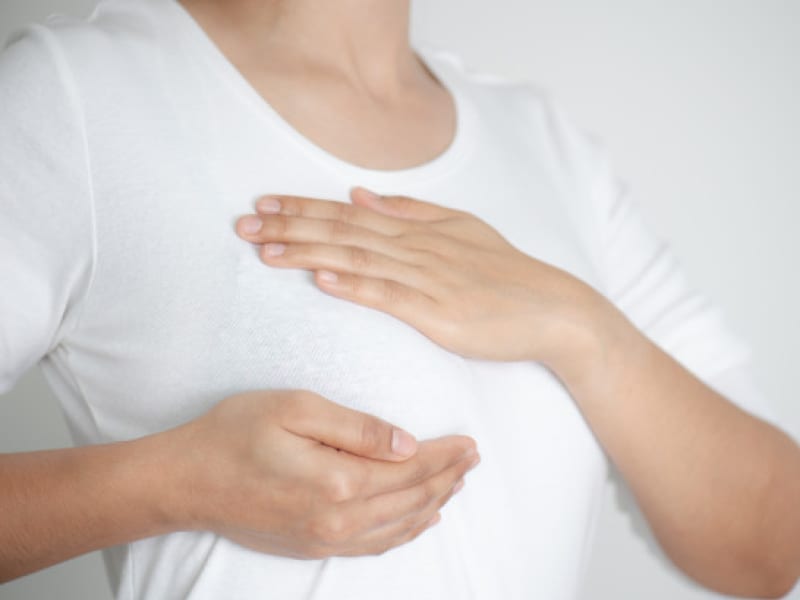Some are small, some big; some face inwards, some face outwards; some are heavy on the top, some are heavy at the bottom — all breasts are beautiful, no matter the size, shape and appearance. Going bra shopping or feeling heavenly having ditched them during the lockdown is all great fun. But other than deciding whether to cover them or not, how much thought do you give your breast health on a regular basis?
Did You Know?
Breast cancer accounts for 14% of cancers in Indian women.
Symptoms Of Breast Disorders
Breast disorders may be noncancerous (benign) or cancerous (malignant). Breast symptoms do not necessarily mean that a woman has breast cancer or another serious disorder. Monthly breast tenderness that is related to hormonal changes before a menstrual period does not indicate a serious disorder.
- Breast pain
- Breast lumps
- A discharge from the nipple
- Changes in the breast’s skin (pitted, puckered, red, thickened, or dimpled)
When Should You Visit Your Doctor?
Women should see their doctor if they observe any change in their breast, like;
- A lump that feels distinctly different from other breast tissue
- A lump that is stuck to the skin or chest wall
- A lump that does not go away
- Swelling that does not go away
- Pitting, puckering, reddening, thickening, or dimpling in the skin of the breast
- Scaly skin around the nipple
- Changes in the shape of the breast
- Changes in the nipple, such as being pulled inward
- Discharge from the nipple, especially if it is bloody and/or occurs spontaneously
Did You Know?
Almost 50% of all breast cancer cases are in the age group of 25-50. And more than 70% of the cases present in the advanced stage had poor survival and high mortality.
Your Guide For Better Breast Health
1. Wear The Right Bra Size
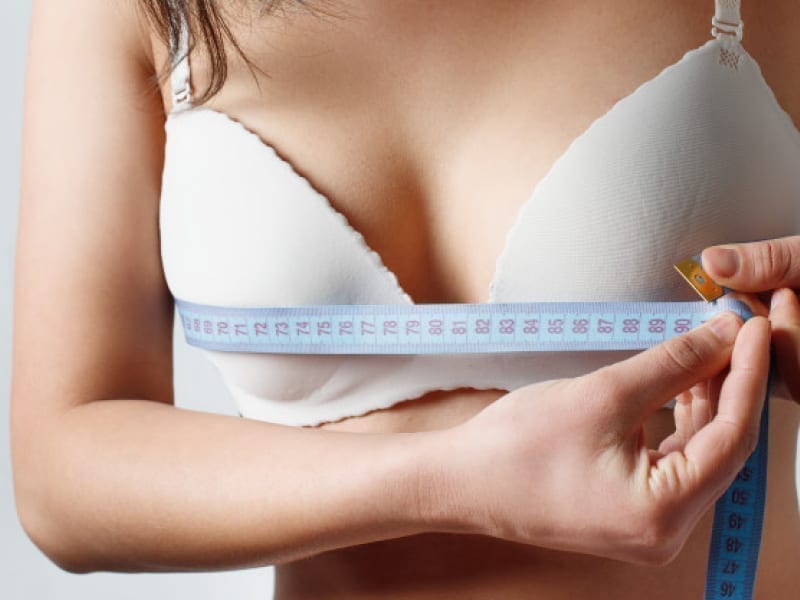
You, like every woman on this planet, struggled to find the right bra size. Every brand and store has its own unique measurement style that leaves you even more confused. But wearing a bra that fits you perfectly is a must.
Benefits:
- Reduce premature breast sagging
- Reduce the deep creases and bulges around the chest
- Help clothes to fit you better
- Prevent back pain and related issues
- Create ultimate comfort
- Prevent breast disorders
Ways To Tell If You’re Wearing The Right Size Bra
- Your bra band should fit nice and snug around your torso. The band should not easily pull away from your body, either in the front or the back.
- The band should sit straight and parallel to the floor. It should start with the underwires or top portion of the band sitting directly underneath the bust, at the breast root, and go directly back.
- It’s totally normal if you have a little overhang or “back fat”. Elastic is wrapping around your body, and no one is made of metal or steel. Often, a wider bra band will lay flatter and can smooth out this issue.
Finding Your Perfect Fit & Bra Size
There are plenty of bra size calculators and even quizzes available on lingerie websites. You can try them or use this simple method.
Step 1: Find Your Band Size
Make sure to wear a lightly-lined or unpadded bra before measuring your band size. Take out a measuring tape and wrap it snugly across your back, keeping it parallel to the ground, and measure directly under your bust. Round down to the nearest even number and note your band size.
Step 2: Measure Your Bust Size
Keep the measuring tape around your back at band level and measure across the fullest part of your chest, making sure to hold the measuring tape snugly against you and parallel to the ground. Take a few deep breaths to let the tape rest on its most comfortable position (but not too loose!). If it falls on the half-inch, just round up. That’s your bust size!
Step 3: Determine Your Cup Size
Determining cup size is where things can get tricky because cup sizes can vary depending on the maker. The most common way to calculate your cup size is by subtracting your band size from your bust size and using the difference to find your cup size according to a bra size chart.
2. Get A Mammogram
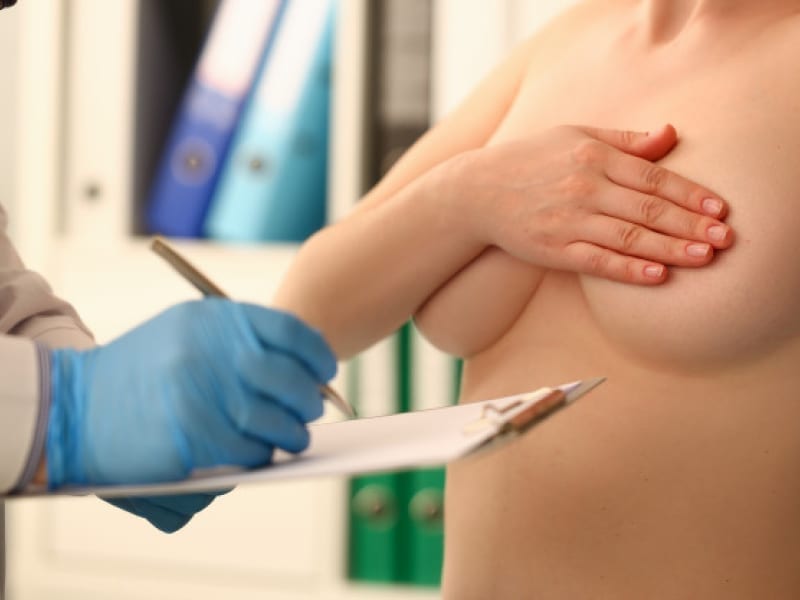
A mammogram is an X-ray of the breast. It’s a screening tool used to detect and diagnose breast cancer. Along with regular clinical exams and monthly breast self-examinations, mammograms are a key element in the early diagnosis of breast cancer.
How Do I Prepare For A Mammography?
- Book an appointment
- Don’t wear deodorants, body powders, or perfumes
- Avoid applying ointments or creams to the breasts
- Be sure to tell your radiologist before the exam if you’re pregnant or breastfeeding
Ideally, you should get mammography done every two years. Images from a mammogram can help find calcifications, or calcium deposits, in your breasts. Most calcifications aren’t a sign of cancer. The test can also find cysts, fluid-filled sacs that may come and go normally during some women’s menstrual cycles, and any cancerous or noncancerous lumps.
3. Learn Self-Breast Examination
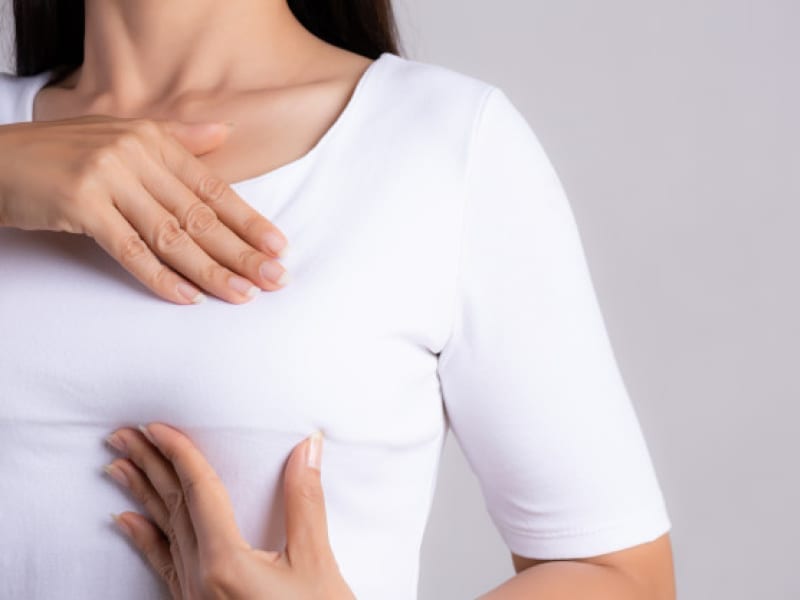
Monthly self-examination of your breasts, done about 5 days after your period starts, is a good practice. These examinations done in the comfort of your home can help determine whether there are any changes that need medical attention.
5-Step Self-Examination Of Your Breasts
Step 1: Start by looking for differences between your breasts
Examine both breasts and look for:
- Visible lumps
- Any unusual differences between the two breasts
- Dimpling or indentations in the breast tissue
- Redness, scaliness, or other changes to the skin or nipples that appear abnormal
- Changes to your nipples, for example, a nipple that is newly inverted or pulling in
Step 2: Put your hands on your hips, pull your elbows forward
- With your hands resting on your hips while squeezing your elbows forward since this might bring out lumps that might not appear otherwise
- Keeping your hands on your hips, slowly swivel from side to side to catch possible abnormalities from more angles
- Lifting your arms above your head, see if there’s any puckering or dimpling of the skin when you elevate them
Step 3: Use 3 fingers when examining your breasts
Breast self-exam should be done while lying down, with a pillow propping up your head and your arm resting behind it. With the opposite hand, take the first three fingers, index, middle and ring fingers, and use them to press down around the breast and surrounding area using circular motions. Using three fingers, rather than just one, keeps you from mistaking normal breast tissue for lumps. Increase the pressure you use with each pass around the breasts to ensure you are not just feeling superficial tissue.
Step 4: Examine the areas surrounding the breast
After examining your breasts, it is important to perform a check of the areas around them. Continue to use circular motions and increasing pressure as you move from the collarbone to the sternum and down below the breast. From the lower part of the breast, travel up to the area under your arm to look for any swelling in the lymph nodes.
Step 5: Perform the test at the same time each month
Be sure to do the breast self-examination the same time every month.
4. Sleep Without A Bra
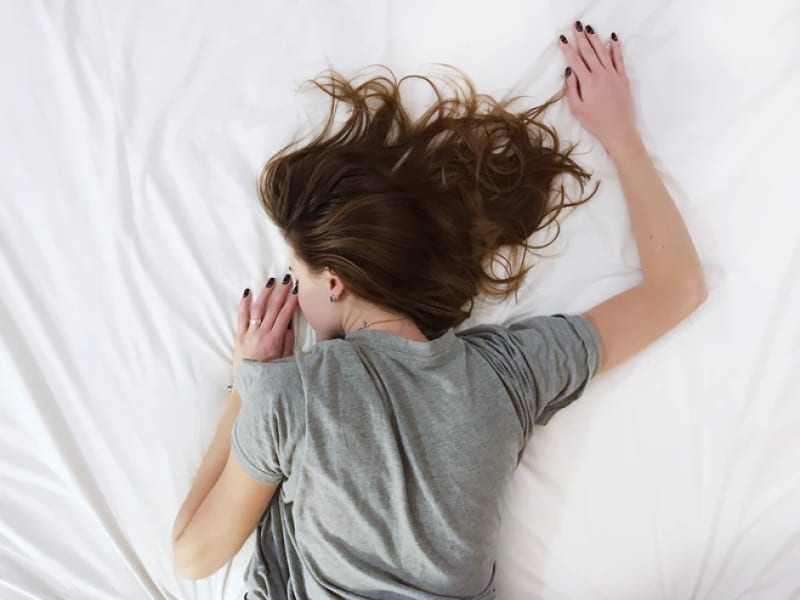
Ask a woman what the best thing about coming back home after a long day is and she will definitely say it’s taking off her bra. Bras are uncomfortable and not something you should be wearing 24×7.
8 Reasons To Go Braless
- The comfort level is much higher when not wearing a bra (freedom!)
- Going braless can actually help with pain relief (no more underwire)
- You can save so much money (bras are expensive!)
- Not wearing a bra can make your breasts stronger (self-support)
- Medically, physiologically, anatomically, the breast does not benefit from being deprived of gravity, a study states.
- Not wearing a bra allows blood to flow more readily around your chest (firm & perky)
- You may be able to sleep better (feel less restricted at night)
- Going braless can improve your breast shape (they don’t sag)
Sleeping in a bra will not make your breasts perkier or prevent them from getting saggy. And it will certainly not stop breasts from growing or cause breast cancer. Wearing bra while sleeping may boost the growth of fungal infection since it may create moisture around the bosom area. Avoid wearing a bra while sleeping and give your breasts time to breathe.
5. If Possible, Breastfeed Postpartum
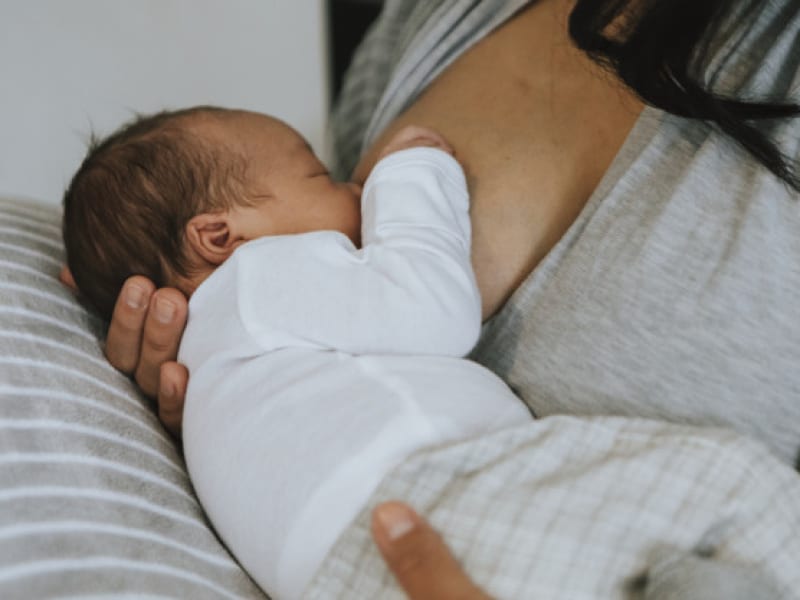
This seemingly natural body function of a new mom doesn’t come as easy as you may think. Some mums struggle to breastfeed after giving birth, especially with their first child. From problems with latching and low milk supply to feeling immense pressure from family to breastfeed the child, every mum goes through a unique journey when it comes to feeding. Add clogged milk ducts to the mix and it gets challenging.
Visit here to know more on how to tighten breasts naturally.
Signs Your Baby Has Latched Properly While Breastfeeding
- Baby’s mouth is wide open
- Baby’s lower lip is turned out like a fish against the breast
- Baby’s chin touches the breast
- You can see more of the areola above the baby’s mouth and less below
- The baby’s tongue is down the lower area of the breast below your nipple
- You are comfortable and do not experience any pain while feeding (a little tenderness or soreness after multiple feeding sessions is normal)
Symptoms Of A Clogged Milk Duct
- A lump in your breast and engorgement around the lump
- Pain or discomfort during feeding or pumping that subsides afterwards
- Pain during let down
- Blister at the opening of your nipple
Natural Remedies For Clogged Milk Ducts
- Take a long warm bath or shower
- Massage the knot gently
- Change the feeding position, use gravity to your advantage
- Eat anti-inflammatory foods like fatty fish, nuts, green leafy vegetables, citrus fruits, berries and tomatoes
- Apply warm cabbage leaves, lavender tea compresses, cold grated potatoes or coconut oil on your breasts
It’s always a good idea to consult your doctor for advice on clearing up clogged milk ducts.
5 Lifestyle Habits To Adopt To Boost Breast Health
- Maintain a healthy weight by exercising regularly as women with a high BMI are at a greater risk for breast disorders.
- Eat healthy foods and increase your intake of omega-3 fatty acids, which are found in walnuts, fish, soybeans and pumpkin seeds.
- Limit your alcohol intake to one drink per day to avoid an increased risk of developing breast cancer.
- Take your vitamins, especially vitamin D as high vitamin D levels are linked to better breast cancer survival rates.
- Eat curries and subzis with loads of turmeric (haldi) and spices like ginger (adrak), cloves (laung), cinnamon (dalchini), black pepper (kali mirch) and red pepper.

